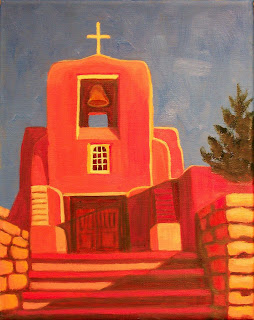
This piece will be going with me to the Florence Biennial in Italy this December 5th-13th!
When Santa Fe was founded in 1607, official records show that an inn, or la fonda, was among the first businesses established.
More than two centuries later, in 1821, when Captain William Becknell and his retinue forged a commercial route across the plains from Missouri to Santa Fe, they were pleased to find comfortable lodging and hospitality at la fonda on the Plaza. Literally the inn at the end of the Santa Fe Trail, La Fonda still occupies the southeast corner of the Plaza where travelers of all descriptions have been welcomed for almost 400 years.
The current La Fonda was built in 1922 on the site of the previous inns. In 1925 it was acquired by the Atchison, Topeka & Santa Fe Railroad, which leased it to Fred Harvey. From 1926 to 1968, La Fonda was one of the Harvey Houses, a renowned chain of fine hotels. Since 1968, La Fonda has been locally owned and operated and has continued a tradition of warm hospitality, excellent service and modern amenities while maintaining its historic integrity and architectural authenticity. A travel writer once said, “Like vintage wine, La Fonda only improves with age...it is definitely an authentic Santa Fe heirloom.”
Farolitos (candles in paper bags), little bonfires traditionally called luminarias and thousands of carolers make this a magical place during Las Posadas pageant on Christmas Eve.
Oil on linen
11x14
$500
Available





























